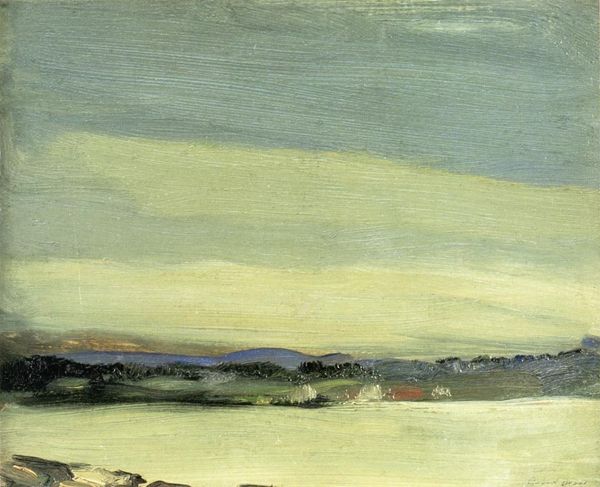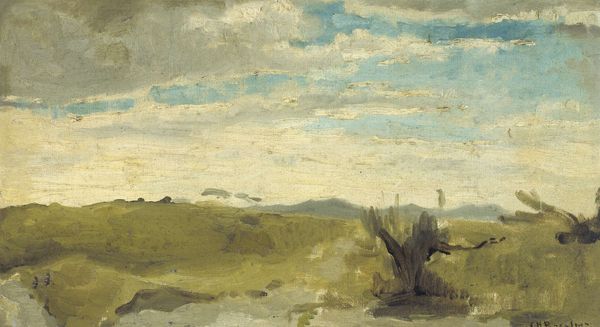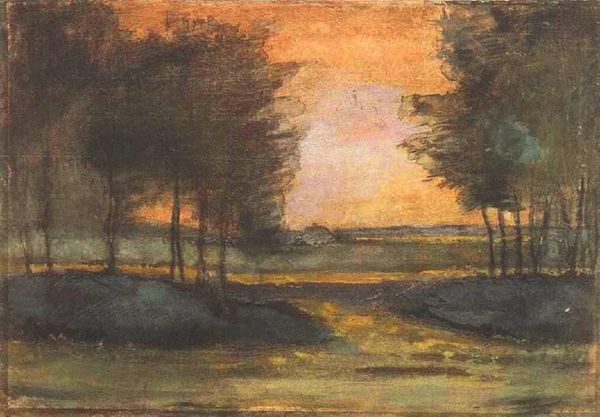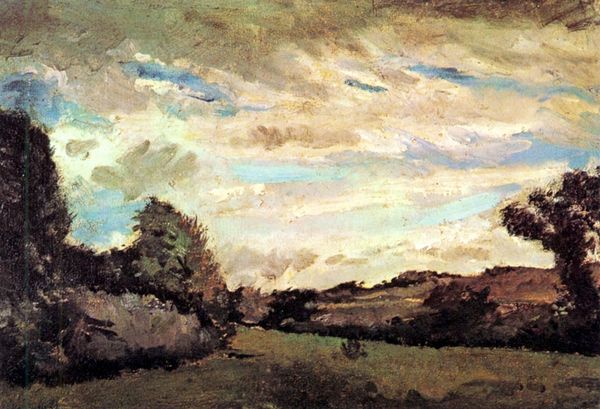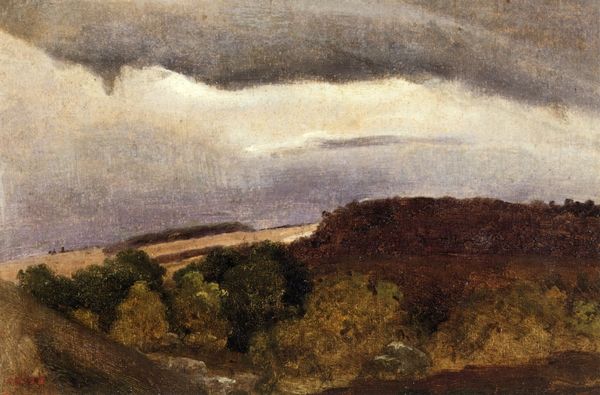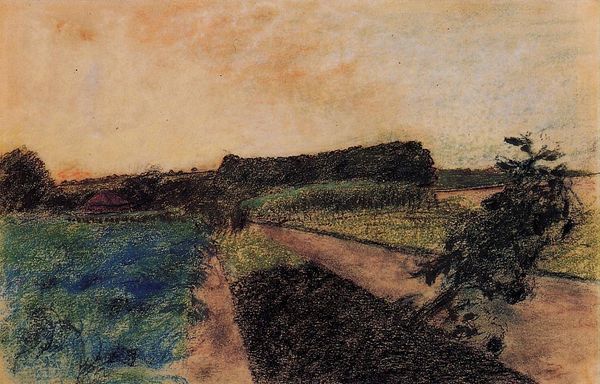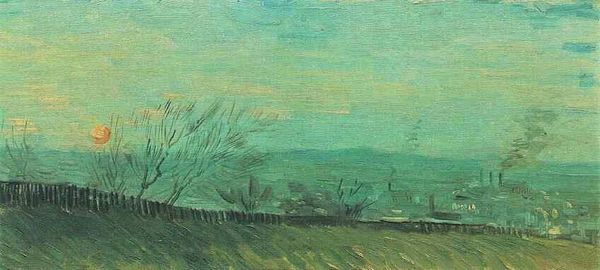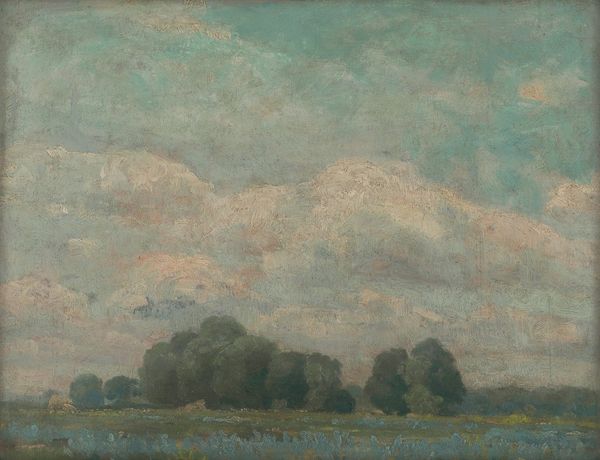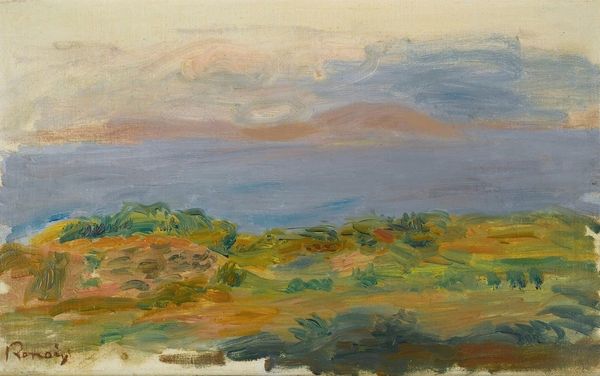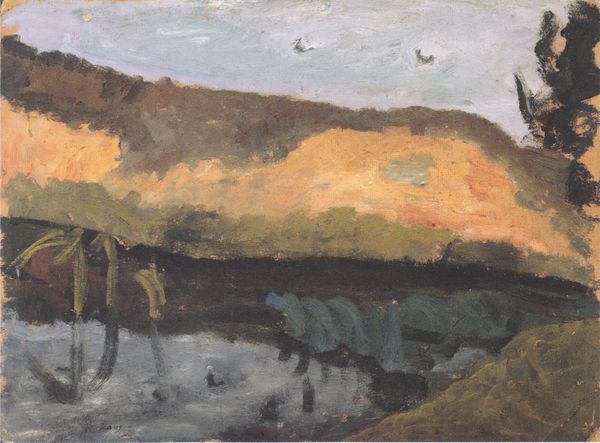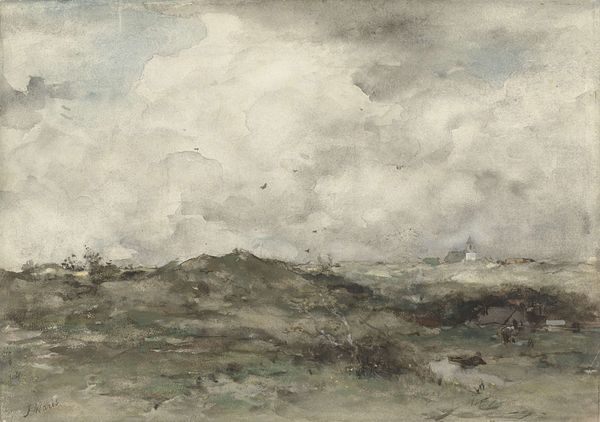
Copyright: Public domain
Curator: Looking at "Crimea," a landscape painting created in 1905 by Arkhyp Kuindzhi, the first thing that strikes me is the overwhelming sense of calm it evokes. Editor: Yes, the quietness is palpable. You can almost smell the damp earth. But look at the visible brushstrokes! There’s a physicality to it that speaks to the labor, the artist wrestling with oil paint. Did he mix his own paints, I wonder? Where did the canvas come from? Curator: That’s a great point. Though on the surface it presents as a peaceful vista, there's something quietly haunting too, isn’t there? The dark mass of the trees contrasting with the ethereal glow of the sky, perhaps symbolizing a tension between the seen and unseen. Crimea, as a landscape, carries so many layers of cultural memory and history, both beautiful and fraught. Editor: Indeed, and think about the socioeconomic conditions Kuindzhi was working within! This wasn’t just some detached, aesthetic exercise. Someone mined the materials, refined the pigments, wove the canvas. All of this labor underpins the final image and deserves our attention, if we are to truly engage with it. Curator: You're right, the means of production are a vital part of its story, it adds to its resonance. To me, the symbolic weight of the land is profound. The light seems to penetrate the darkness, perhaps reflecting a longing for peace, for respite from societal unrest that may also exist on this soil. Editor: Perhaps so, though I’m less interested in Kuindzhi's internal state, or subjective longings. For me, it’s about tracing the material and social conditions that made this painting possible. Its physicality—the paint, the linen, even the stretcher bars—tells as much of a story as the depicted landscape itself. Curator: Well, seeing the land, filtered through the material used in painting it, I can almost feel Crimea, not only as it was then, but all that it was and is. Thank you, I’ll be looking for the specific details of the materials myself from now on. Editor: I’m just glad we had the opportunity to look closer at "Crimea" today, and hope our audience takes inspiration and continues their own journeys through materiality.
Comments
No comments
Be the first to comment and join the conversation on the ultimate creative platform.
